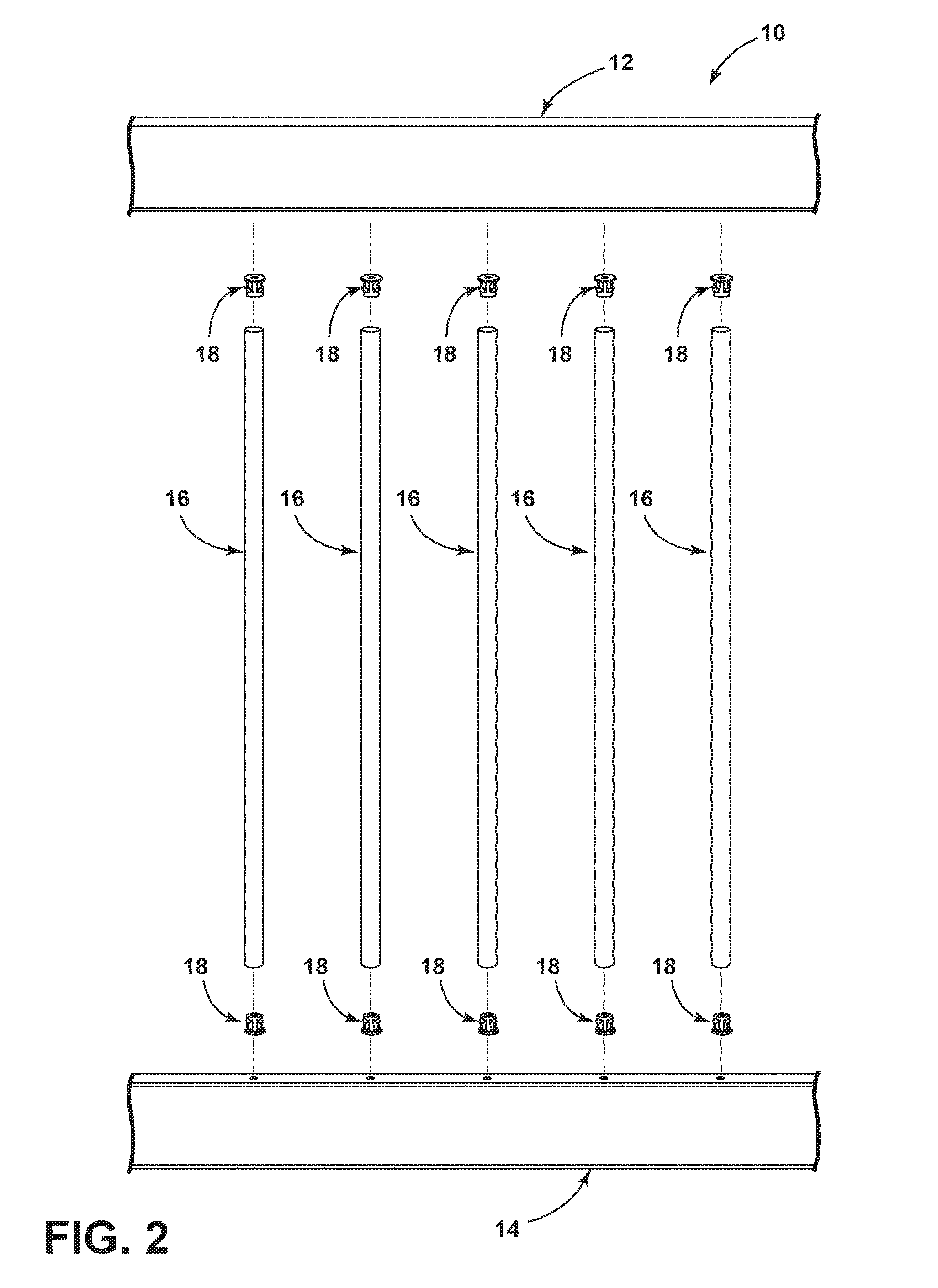Baluster connector
a technology of connectors and balusters, applied in the direction of balusters, building types, constructions, etc., can solve the problems of insecure mounting between the baluster and the rail, waste of material in the center of the baluster, and not always satisfying the consumer's desire for a connection
- Summary
- Abstract
- Description
- Claims
- Application Information
AI Technical Summary
Benefits of technology
Problems solved by technology
Method used
Image
Examples
Embodiment Construction
[0016]Turning now to the drawings, and to FIGS. 1-2 in particular, the invention relates generally to railing systems 10, shown by example in FIGS. 1-2, which typically have a top rail 12, a bottom rail 14, a plurality of balusters 16 spanning a vertical distance between the top rail 12 and bottom rail 14. In some cases, the railing system 10 can only have a top rail 12, and the balusters 16 are connected directly to a floor surface (not shown in the exemplary railing systems shown in FIGS. 1-2). In these figures, a plurality of connectors 18 are shown for interconnecting each baluster 16 to a corresponding top rail 12 or bottom rail 14 of the railing system 10.
[0017]The connector 18 is shown by example in greater detail in FIG. 3, and with a vertical-cross-sectional view through lines IV-IV of the connector 18 shown in FIG. 4. The connector 18 generally has a body 20 having a first end 22 and a second end 24. Although the body 20 is shown generally as a cylindrical member having a ...
PUM
 Login to View More
Login to View More Abstract
Description
Claims
Application Information
 Login to View More
Login to View More - R&D
- Intellectual Property
- Life Sciences
- Materials
- Tech Scout
- Unparalleled Data Quality
- Higher Quality Content
- 60% Fewer Hallucinations
Browse by: Latest US Patents, China's latest patents, Technical Efficacy Thesaurus, Application Domain, Technology Topic, Popular Technical Reports.
© 2025 PatSnap. All rights reserved.Legal|Privacy policy|Modern Slavery Act Transparency Statement|Sitemap|About US| Contact US: help@patsnap.com



